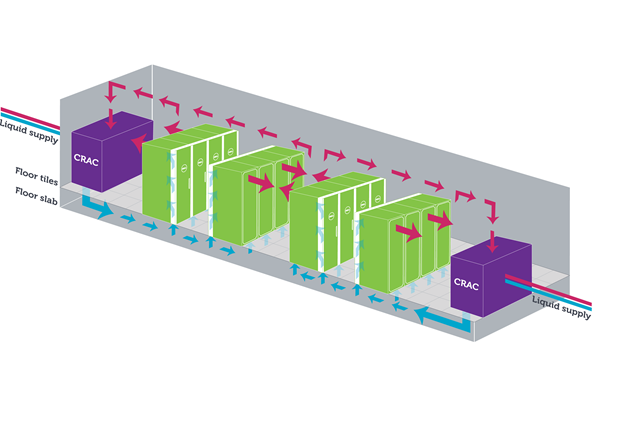Today, there is a lot of buzz about implementing containment in data centers. IT organizations are grappling with the challenge of getting enough cool air to their equipment while also keeping their operating costs under control. Containment provides one method to reduce the amount of air conditioning that is being provisioned into the data center by as much as 50%. It’s interesting to look at the wide range of solutions being devised to help address this challenge.
The options offered tend to fall into three categories: room-level, row-level, or rack-level. Many of these are active solutions that require either external power or plumbing.
- Room-level: You can design your entire data center room to contain cold air under the floor and hot air above the ceiling, and provide the necessary ducting to route the air accordingly. This is great for an all-new facility. However, if you’ve got an existing space to work with, your options for redesigning the room may be constrained.
- Row-level: Aisle containment, either in the hot aisle or the cold aisle, uses hanging partitions or solid panels attached to the top and sides of the racks. These offerings are available from multiple vendors and typically require customization around a fixed number of racks. Depending on the configuration, facilities such as fire suppression systems may have to be modified for use within the contained area.
- Rack-level: Containment can be done on the hot side or cold side. Hot side solutions include chimney ducts, which may need to be connected to the ceiling or other duct work, and rear door coils, which require water or refrigerant for cooling the hot exhaust. One option for cold side containment is the Energy Smart rack, which seals to the floor to passively direct air into an integrated chamber to distribute it equally to all installed equipment. It can be easily positioned over a ventilated grate in a data center using raised-floor cooling, and doesn’t require any modification to the room’s facilities.

One key factor for managing operating costs is to implement best practices in your data center deployment, such as hot/cold aisle configuration and using blanking panels in any unused rack space. Taking the basic steps for temperature separation and airflow paths will help to improve efficiency in the data center.
While there is no single solution for every installation, it is certainly possible to identify what the best option is for a particular implementation, taking into consideration the tradeoffs. For example, in a data center with raised-floor cooling, rack-level containment can provide better support for higher density deployments than aisle containment. However, this can induce pressure on the server, so the server level implications need to be understood.
If you need help determining the best containment solution for your data center, Dell Services can perform an assessment at your facility. If a rack-level solution is right for you, the Energy Smart rack provides integrated containment, natural high density capability, and greater room distribution control.
Feel free to share your insights on this topic. What are the cooling challenges you are dealing with? Which containment solution fits best for your data center environment? What are the key features that are most interesting or beneficial to you? We’d enjoy hearing back from you.